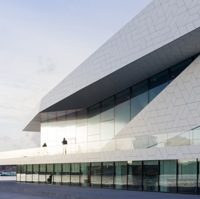You could roam around for hours in De Pijp. Amsterdam’s Latin Quarter is a lively mix of cultures, cuisines and sights.
BOHEMIAN RHAPSODY
No one is entirely sure where the name ‘De Pijp’ (The Pipe) came from: some believe it was the narrow, meandering ‘pipe’-like streets; others assume it was because of a ditch that once divided the district – now home to the bustling Albert Cuyp Market, otherwise known as ‘the Kitchen of Amsterdam’. Either way, Amsterdam’s Latin Quarter is hot on the picturesque Jordaan’s heels in terms of popularity: house prices have increased by 350 per cent in the last decade.
A hub for artists, students and bohemian spirits, De Pijp is undeniably Amsterdam’s creative district. Divided in two (‘De Nieuwe’ and ‘De Oude’), this area even has streets named after its artistic alumni: the main thoroughfare is called Ferdinand Bolstraat after one of Rembrandt’s pupils, while the Vincent van Goghstraat speaks for itself.
At the turn of the 21st century, abstract artist Piet Mondriaan allegedly founded his revolutionary art of ‘De Stijl’ in a poky studio on Ruysdaelkade (no. 75 should you want a historical peek), while the writer Ferdinand Bordewijk referred to the area as ‘a ramshackle bordello, a wooden shoe made of rock’ while penning his acclaimed novel Growling Animals in the early ’30s. It was a time of unadulterated bonhomie, with the likes of Eduard Jacobs igniting the Dutch cabaret scene with his absurd, humorous skits. Bawdy stand-up, drunken social debate and general reverie filled the rustic cafés, while brewers such as Heineken flocked to supply the booze. Ask any local here directions to their house and they invariably say, ‘Behind the Heineken Brewery.’ Even the architecture hasn’t lost this playful vibe, with Ceintuurbaan 251-255 sporting carved wooden gnomes tossing balls at each other from the rooftops.
While De Pijp has always harboured beatnik flair, with cafés, art-house cinemas and utopian students in abundance, the area did see a seismic shift in CULINARY DNA during the ’60s and ’70s. The Heineken Brewery’s immense growth attracted Spanish, Turkish, Moroccan and Surinamese workers – there are now more than 150 different nationalities residing in the area – who immediately showcased their tastes around the Albert Cuyp Market. Local antiques dealer Martina van der Malrijk remembers it well: ‘Everything was rather bourgeois in the ’50s; it was arty yet quite narrow-minded. There was only one colour and it was Dutch.’ Van der Malrijk goes on to explain local reaction to these shifts: ‘At first we didn’t like it – I remember the first day that the Albert Cuyp Market smelled of bakso malang [an Indonesian spicy soup] instead of fresh bread – but we soon adapted and their food became ours and our home became theirs.’
It is this inclusive attitude that above all epitomises this multi-ethnic ’hood.
De Pijp is also the territory of physician, urban planner and philanthropist Samuel Sarphati, who is commemorated in SARPHATIPARK with a statue. This green oasis in the centre of De Pijp attracts visitors with delicate vistas and impressive foliage. Complete with a dog park, children’s playground and outdoor gym area, hip mummies natter alongside the city’s bright young things penning their memoirs.
The heart of this neighbourhood, however, is ALBERT CUYPSTRAAT – the ‘pipe’-like street that cuts this vibrant area in two with its 260 stores of hustle and bustle operating six days a week. Whether Vietnamese spring rolls, Dutch herring or freshly-made stroopwafels, this famous market epitomises the diversity that has put this bohemian hub on the map.

